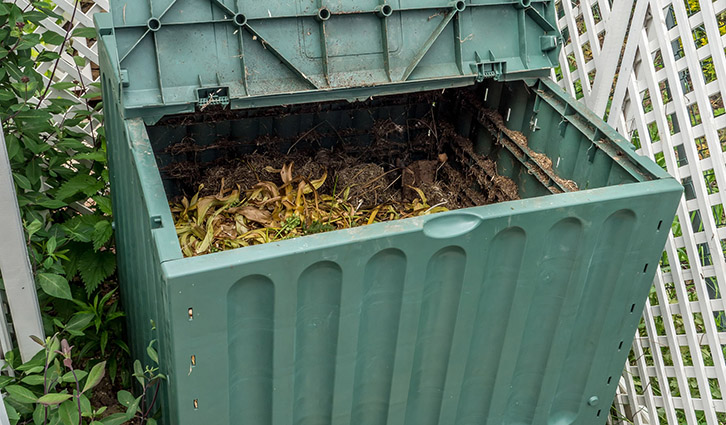-
Published: Jan 13, 2018 | 17:05 PM
Composting Basics: Know the Materials and Methods
To retain soil moisture while discouraging weeds, Irvine Ranch Water District encourages generous use of mulch to cover garden and bedding soils. Did you know that adding compost as a low-cost, natural, non-chemical soil amendment also helps preserve moisture while nourishing your plants?
Compost is the biologically active material that results from decomposition of organic material under controlled conditions. Composting—the process of cultivating and harvesting compost—uses the following organic materials:
Greens include grass clippings, yard trimmings, green leaves, fruit and vegetable scraps, coffee grounds, tea bags, and horse, cow, chicken or rabbit manure. Greens contain nitrogen, which aids breakdown of organic matter.
Browns include dried leaves, woody plant material, chopped/ground twigs and branches, straw, hay, sawdust, and shredded newspaper or cardboard. Browns contain carbon, which increases surface area and eases decomposition.
Water creates a favorable environment for microorganisms that break down organic material. A compost pile should be kept as moist as a wrung-out sponge.
Air provides the environment necessary for microorganisms to live and multiply. Turning the compost inhibits odor-causing bacteria and speeds creation of the fi nished product — a nutrientrich soil amendment, ready to be harvested and worked into the soil.
Do not use meat, fish, poultry, bones, dairy products, grease, lard, weed seeds, Bermuda grass, nutsedge, dog or cat manure, charcoal or Durafl ame ashes, or treated wood products.
The traditional method of composting involves making a pile of organic materials and letting it stand for a year.
For faster harvesting, first chop the materials into oneinch or smaller pieces to provide greater surface area for decomposition. If available, place course material at the bottom of the compost bin to promote air circulation. Next, build the pile by alternating green and brown materials as they become available. Then periodically turn and moisten the compost.
Compost is ready for harvesting when it has a pleasant, earthy aroma, a dark brown color and a crumbly texture. If a few chunks of woody material remain, screen them out and place them in the next batch.
Incorporating compost into soil is the most common way to use it. Spread two to four inches of compost and mix it into the soil to a depth of six inches. This improves the texture and water retention of Orange County soils, which tend to be mostly clay or sandy.
Want to learn more? Visit uccemg.com and type “composting” in the search fi eld.



